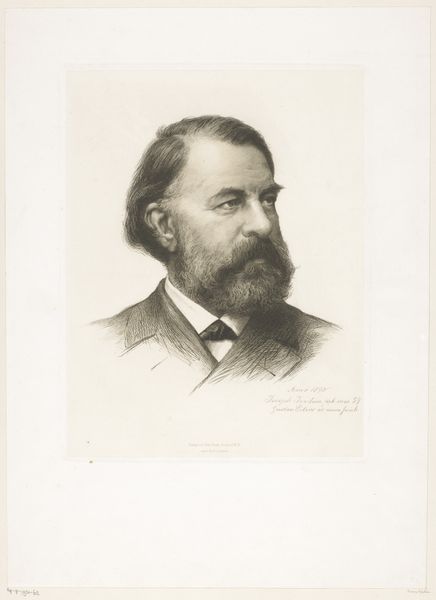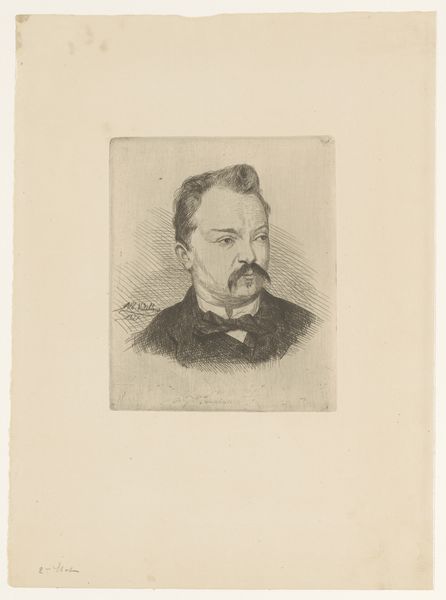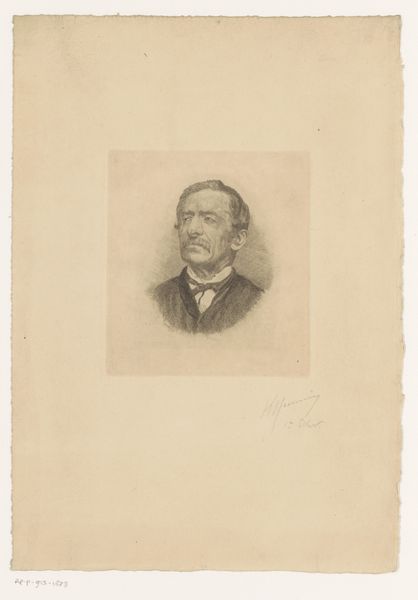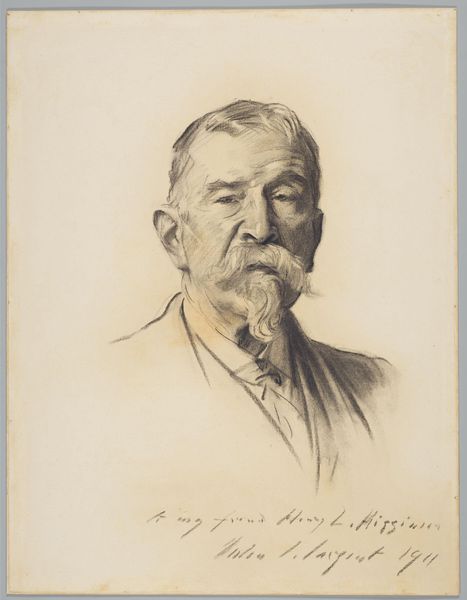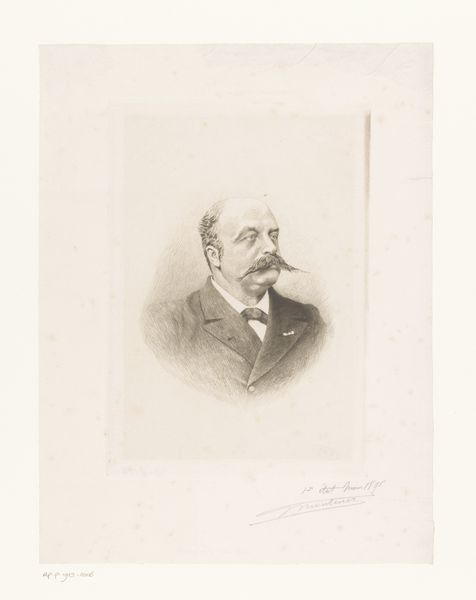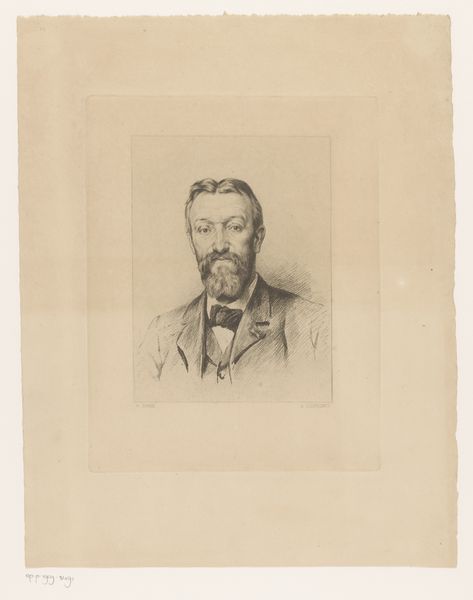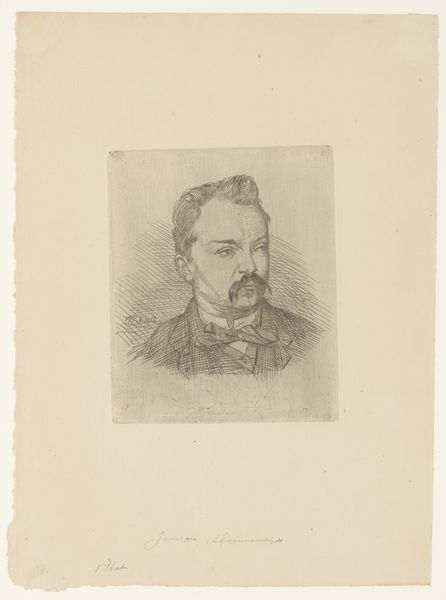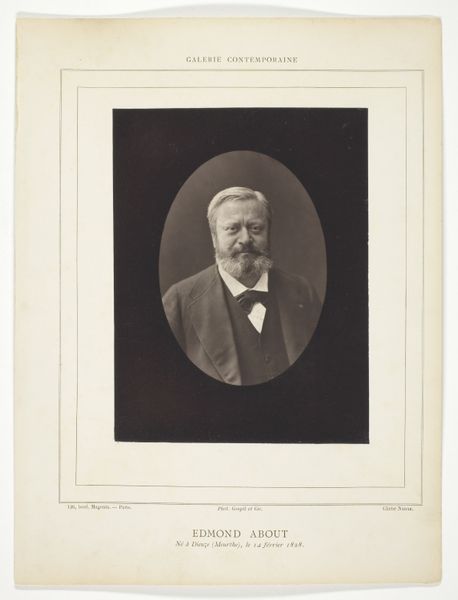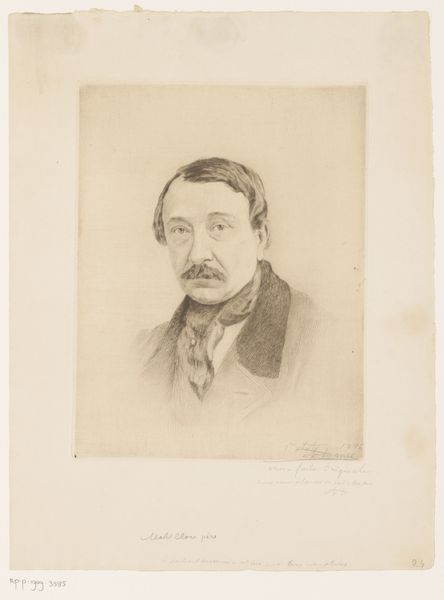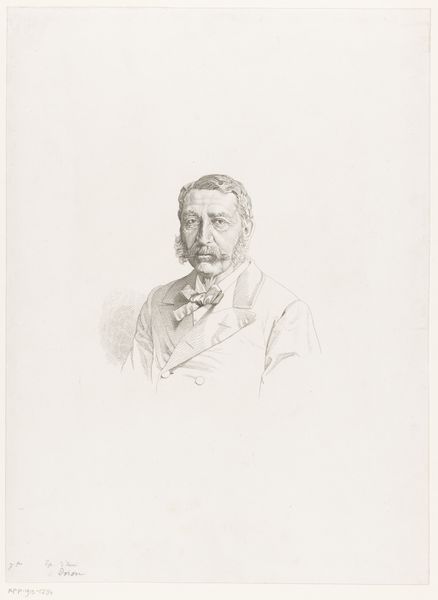
Portret van een onbekende man, mogelijk de Parijse ingenieur Wittman 1897
0:00
0:00
drawing, pencil
#
portrait
#
pencil drawn
#
drawing
#
charcoal drawing
#
pencil drawing
#
pencil
#
portrait drawing
#
academic-art
#
realism
Dimensions: height 278 mm, width 201 mm
Copyright: Rijks Museum: Open Domain
Editor: So, here we have Auguste Danse’s “Portrait of an Unknown Man, possibly the Parisian Engineer Wittman,” created in 1897. It’s a drawing, likely in pencil, and it’s remarkably lifelike. It has this really quiet, contemplative feel to it, doesn't it? What do you see in this piece? Curator: It is a compelling image. Beyond the skillful realism, I see a representation of power structures embedded in late 19th-century society. Portraits like these weren't just about capturing a likeness. They were performative acts of identity, particularly for men in burgeoning fields like engineering. We might ask: What did it *mean* to be an engineer at the end of the century, and how is that identity constructed here? Editor: That’s interesting! I hadn't thought about it in terms of identity. Curator: Consider the meticulous detail given to his clothing, his mustache, and even the confident set of his jaw. How might those visual signifiers communicate his class and professional status in that era? Think about the Industrial Revolution and the rise of this professional class. Editor: I guess I was focused on the artistic technique and missed the societal implications. So the engineer's portrait is part of a bigger story? Curator: Absolutely. It's a fragment of a broader narrative around societal roles, class, and the visual language used to uphold those hierarchies. Who gets represented and *how* are never neutral choices. Does considering it this way change how you see the drawing? Editor: It really does. I appreciate how this close look challenges our contemporary assumptions about art’s purpose! Curator: And hopefully allows us to see these historical works as more than just pretty pictures but rather complex cultural artifacts.
Comments
No comments
Be the first to comment and join the conversation on the ultimate creative platform.

